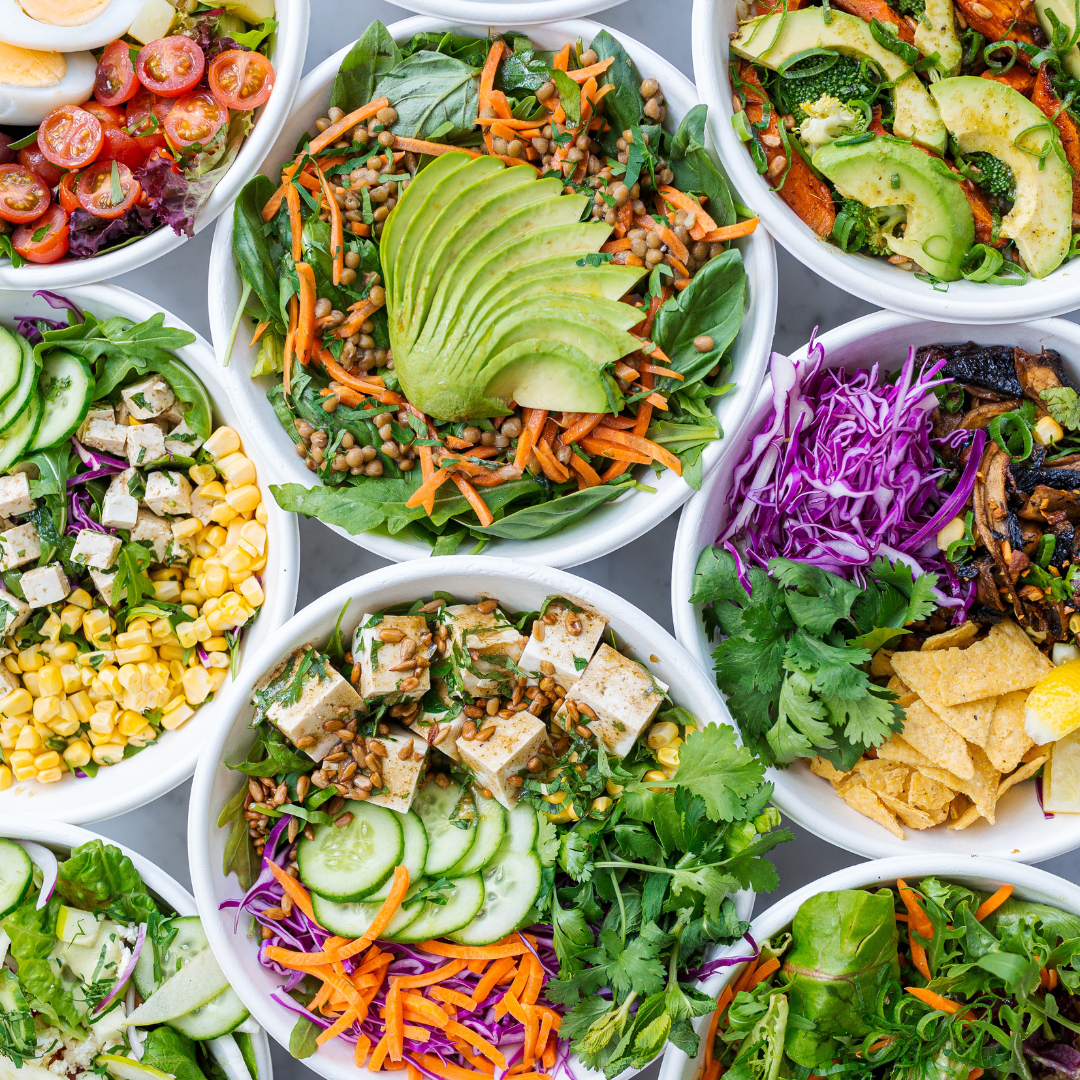
How Healthy Is Your Salad?
Did you ever think that a salad could have more calories and fat than a serving of fried chicken? Most people believe they’re making a smart diet choice by opting for a salad, but end up sabotaging their weight loss goals.
Don’t get me wrong – salads are a great way to get your recommended daily allowance of fruits and veggies and are often full of nutritious goodness. Made with the right foods they can also be a great meal for those seeking to lose some weight.
Next time you inspect the salad bar or your refrigerator for ingredients to toss in your salad, keep the following tips in mind.
Fruits and Vegetables
Leafy greens and veggies should be the base of your salad. Choose as many vegetables as you would like. Choose from mixed greens, broccoli, sugar snap peas, spinach, cucumbers, onions, peppers, cauliflower, mushrooms, green beans, zucchini, shredded carrots, radish, sprouts, cabbage, beets, tomatoes, and whatever veggie you can think to add. At only 25 calories per serving, vegetables are loaded with vitamin C, folic acid, potassium, fiber, and antioxidants. So the more veggies, the better!
In addition to all your other veggies, go with the darkest green lettuce you can find. Choose Romaine, spinach, mustard leaves, or green leaf over iceberg for increased nutrition. Leafy greens come in at less than 20 calories per two-cup serving and provide folic acid, antioxidants, vitamins, and minerals.
Fruit is also a great salad option, as they add sweetness and nutrition to your salad. Try fruit such as cranberries, grapes, sliced strawberries, tangerines, or apples, and watch your plain old salad transform into a piece of culinary art.
Protein
If you find yourself feeling hungry soon after eating a salad, add some protein the next time. Good sources of protein to toss in a healthy salad include hard-boiled eggs or just the egg whites, grilled chicken, grilled salmon, steamed or boiled shrimp, tuna packed in water, low-fat cottage cheese, or roasted turkey breast. A good serving size of this protein would be three ounces.
If meat or animal products aren’t your thing, add about three quarters cup of one or more of these protein sources to your salad: lentils, tofu, black beans, garbanzo beans, chickpeas, or a small amount of nuts (they’re also high in fat, so don’t over-do them). Tempting as they may be, avoid fried, crispy, or saucy items that many add to salads.
Extras
Though many salad extras may be packed with nutrition, they are often also full of calories. On average, extras add approximately 600 calories to an otherwise low-fat salad. A good rule of thumb when it comes to preparing a light salad is to choose just one high-calorie extra or two half-portion extras. Popular high-calorie add-ons include fried noodles, cottage cheese, pepperoni, avocado, bacon, blue cheese, croutons, cheese, or nuts.
If you love the taste and texture of croutons, try crushing a few and sprinkling them over your salad. If your salad doesn’t seem complete without cheese, try a strongly flavored cheese like Feta or Parmesan. A small amount will go far. Also, use chopped nuts instead of whole to get more bites of a good thing.
Dressing
Dressing often makes the salad. Unfortunately, it can also make a salad a high-calorie event. The average vinaigrette contains 50 calories in one tablespoon, while the same amount of ranch dressing contains about 90 calories. Plastic containers or dressing packets at restaurants contain four tablespoons of dressing. The entire packet adds an additional 200-360 calories. As if that weren’t enough, many dressings also contain saturated fat. This raises cholesterol and the risk of heart disease.
Instead of grabbing the first dressing, you see, look for a low-fat, low-calorie option. A healthy dressing choice is a couple of teaspoons of olive oil mixed with vinegar or lemon and spices or herbs. Instead of drenching your salad in dressing, dip your fork into the dressing before taking a bite of salad.
Remember, eating healthy is half of the battle when it comes to fitness and wellness. The other, equally important, side is maintaining a regular, challenging exercise program.
